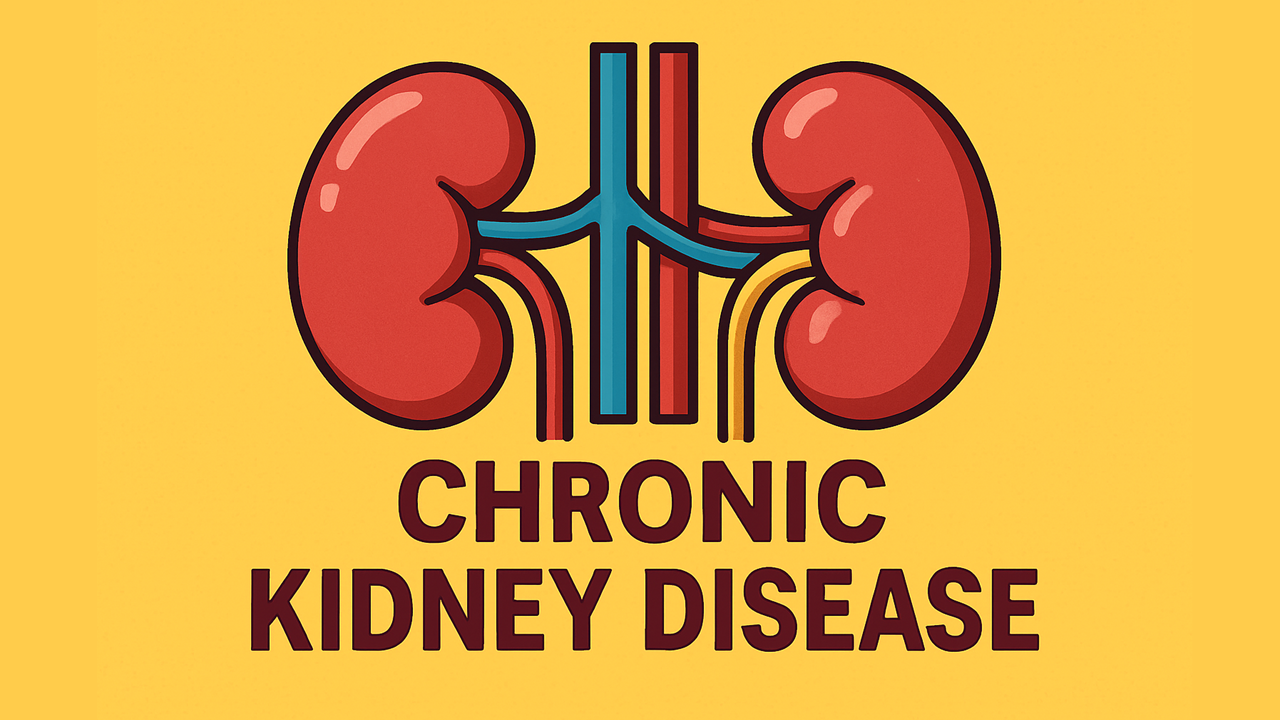Nano-Curcumin’s Potential in Advanced COPD
Chronic obstructive pulmonary disease (COPD) remains a major cause of disability and death around the world, affecting millions and ranking as the third leading cause of mortality globally [1]. At its core, COPD leads to progressive lung damage, airflow obstruction, and severe breathing challenges, often accompanied by chronic inflammation that makes everyday life an uphill battle. Standard inhaled therapies, supplemental oxygen, and lifestyle interventions can ease symptoms, but they do not always halt disease progression. As a result, experts continue searching for new adjunct approaches that might quell inflammation, protect lung tissue, and improve patients’ overall quality of life.
Why Curcumin?
Curcumin, a naturally derived compound from turmeric, is widely recognized for its anti-inflammatory and antioxidant actions [2]. People frequently take it as a dietary supplement, hoping to benefit conditions like arthritis, metabolic syndrome, and cardiovascular concerns. Yet curcumin’s poor oral bioavailability has hampered its consistent clinical success. Only a fraction of traditional curcumin doses typically reach systemic circulation. Recently, however, scientists developed nano-curcumin—essentially curcumin molecules enclosed in tiny nanoparticles or liposomes—to enhance absorption [3]. We might notice this new formulation requires smaller amounts to achieve therapeutic blood levels, since nano-delivery shields the compound from rapid breakdown.
For COPD patients, curcumin holds special promise because of its proven ability to block the NF-κB pathway, thereby suppressing pro-inflammatory signals like interleukin-6 (IL-6) [4]. Curcumin also activates pathways in cells that increase antioxidant enzyme production, countering the oxidative stress that triggers lung tissue damage. By combining these modes of action—inflammation reduction and free-radical scavenging—researchers hypothesize that nano-curcumin could slow lung function decline and bolster patients’ respiratory capacity.
The 2024 Trial at a Glance
In early 2024, a double-blind, randomized, placebo-controlled trial examined nano-curcumin supplementation’s effects on patients with advanced COPD, specifically those in stages 3 and 4 of the disease [2]. This phase II study included 60 participants who were already receiving standard COPD medications but still suffered significant impairment. They were split into two groups of 30 each, with one receiving nano-curcumin (80 mg daily) and the other a look-alike placebo for three months. By the trial’s conclusion, 30 individuals in the curcumin group had completed the protocol, and 30 completed it under placebo.
Key outcomes included spirometric measures like forced expiratory volume in 1 second (FEV1), forced vital capacity (FVC), and the ratio FEV1/FVC. These metrics reflect how much air patients can exhale and how quickly—critical factors in COPD. The study also tracked IL-6 levels (an inflammatory cytokine), body weight, BMI, blood pressure, and waist circumference. All these measures were recorded before and after the three-month supplementation period [2].
Breathing Easier: Lung Function Gains
Perhaps the most remarkable findings were the gains in lung performance. Patients taking nano-curcumin showed statistically meaningful increases in FEV1 and FVC, alongside an improved FEV1/FVC ratio [2]. Meanwhile, placebo users did not share those benefits. Because severe COPD typically drives lung function down or at best keeps it stable with aggressive therapy, this improvement—even if modest—speaks volumes about curcumin’s anti-inflammatory potential. It suggests these patients were exhaling more air, possibly experiencing less wheezing, and gaining better exercise tolerance. While we still want larger investigations to confirm durability, seeing lung function move in a positive direction within just 12 weeks stands out as a powerful indication.
Cutting the Fire: Reduced IL-6 and Systemic Inflammation
Chronic inflammation underlies COPD’s destructive spiral. The trial noted significant drops in serum IL-6 among the nano-curcumin participants [2]. Lower IL-6 can mean diminished recruitment of immune cells that damage lung tissue. It could also potentially mitigate some of COPD’s systemic effects, including muscle wasting and metabolic disturbances. Although the study did not track exacerbation frequency, we can imagine that curbing inflammation has a strong chance of decreasing the number or severity of acute flare-ups down the line.
Surprising Weight and Blood Pressure Effects
On top of respiratory gains, the nano-curcumin group posted slight but important gains in body weight, translating into higher BMIs [2]. In advanced COPD, patients often experience weight loss and muscle wasting, so reversing that trend might indicate enhanced nutritional status or reduced catabolism. Researchers aren’t sure whether curcumin prompted better appetite, metabolic function, or improved disease control—further work is needed to flesh this out. Interestingly, participants taking nano-curcumin also showed a small positive shift in systolic blood pressure, moving closer to normal values [2]. That might tie back to reduced chronic inflammation, given that systemic inflammation can affect vascular function.
Some anthropometric indicators, like waist circumference, remained unchanged. But not adding central body fat is arguably good, especially since excess visceral fat can worsen overall cardiometabolic risk in COPD. The net result is that nano-curcumin’s benefits spanned respiratory, inflammatory, and general health metrics.
High Safety, Low Side Effects
Reassuringly, no major safety signals surfaced. Nano-curcumin was well-tolerated over three months [2]. That aligns with broader evidence that curcumin, especially in such formulations, is largely safe, even at higher doses [3]. Mild gastrointestinal discomfort sometimes occurs with curcumin, but in this trial, participants completed the intervention without notable adverse events. Many COPD patients already struggle with comorbid conditions, so the absence of extra strain on liver or kidney function is crucial. Such a favorable safety profile may make it simpler for clinicians to recommend this adjunct once more data confirm efficacy.
Looking Ahead: Broader Research Horizons
While these findings bring optimism, experts emphasize that a larger, multi-center trial with a more extended follow-up is needed to solidify nano-curcumin’s place in COPD care [4]. Do the improvements in lung function persist beyond three months, or do they plateau? Does curcumin reduce hospitalization rates or acute flares? More comprehensive biomarker analyses—like checking additional inflammatory mediators and oxidative stress markers—could help map curcumin’s precise mechanisms. Still, given how COPD remains difficult to treat and how accessible curcumin supplements are, many foresee these results spurring new protocols that integrate nano-curcumin with conventional respiratory therapies.
Beyond COPD, curcumin’s broad anti-inflammatory and antioxidant profile might prove equally beneficial in other lung conditions, like asthma, bronchiectasis, or pulmonary fibrosis. We’ll likely see researchers leverage the success of this pilot to explore whether nano-curcumin can improve outcomes in other chronic respiratory illnesses. The synergy between nutraceutical-based solutions and standard medication might become an emerging frontier, offering patients more holistic management with fewer side effects.
Concluding Thoughts
This 2024 clinical trial provides a striking example of how a centuries-old herbal compound can gain renewed scientific legitimacy when presented in a modern, bioavailable format [1][5]. COPD is a formidable disease, and while the standard inhalers and oxygen therapy remain first line, a nano-curcumin supplement could be the missing link for improved lung function and systemic health. Given the evidence—significant gains in FEV1, reduced IL-6, safer weight and blood pressure levels, plus minimal side effects—the door is open to stronger, follow-up investigations. If confirmed, such a simple, over-the-counter add-on might meaningfully improve daily life and outcomes for individuals with advanced COPD. We can’t help but see it as a compelling reminder that synergy between natural compounds and cutting-edge formulation technology holds real promise for tackling chronic, debilitating illnesses.
References:
Halpin, D. M. G. (2024). Mortality of patients with COPD. Expert Review of Respiratory Medicine, 18(6), 381-395.
Zare’i, M. et al. (2024). Nanocurcumin supplementation improves pulmonary function in severe COPD patients: A randomized, double-blind, and placebo-controlled clinical trial. Phytotherapy Research, 38(3), 1224-1234.
Liu, Y. et al. (2024). Curcumin nanopreparations: recent advance in preparation and application. Biomedical Materials, 19(5), 052002.
Safari, S. et al. (2023). Curcumin effects on chronic obstructive pulmonary disease: a systematic review. Health Science Reports, 6(3), e1145.
Hewlings, S. & Kalman, D. (2017). Curcumin: A review of its’ effects on human health. Foods, 6(10), 92.






























